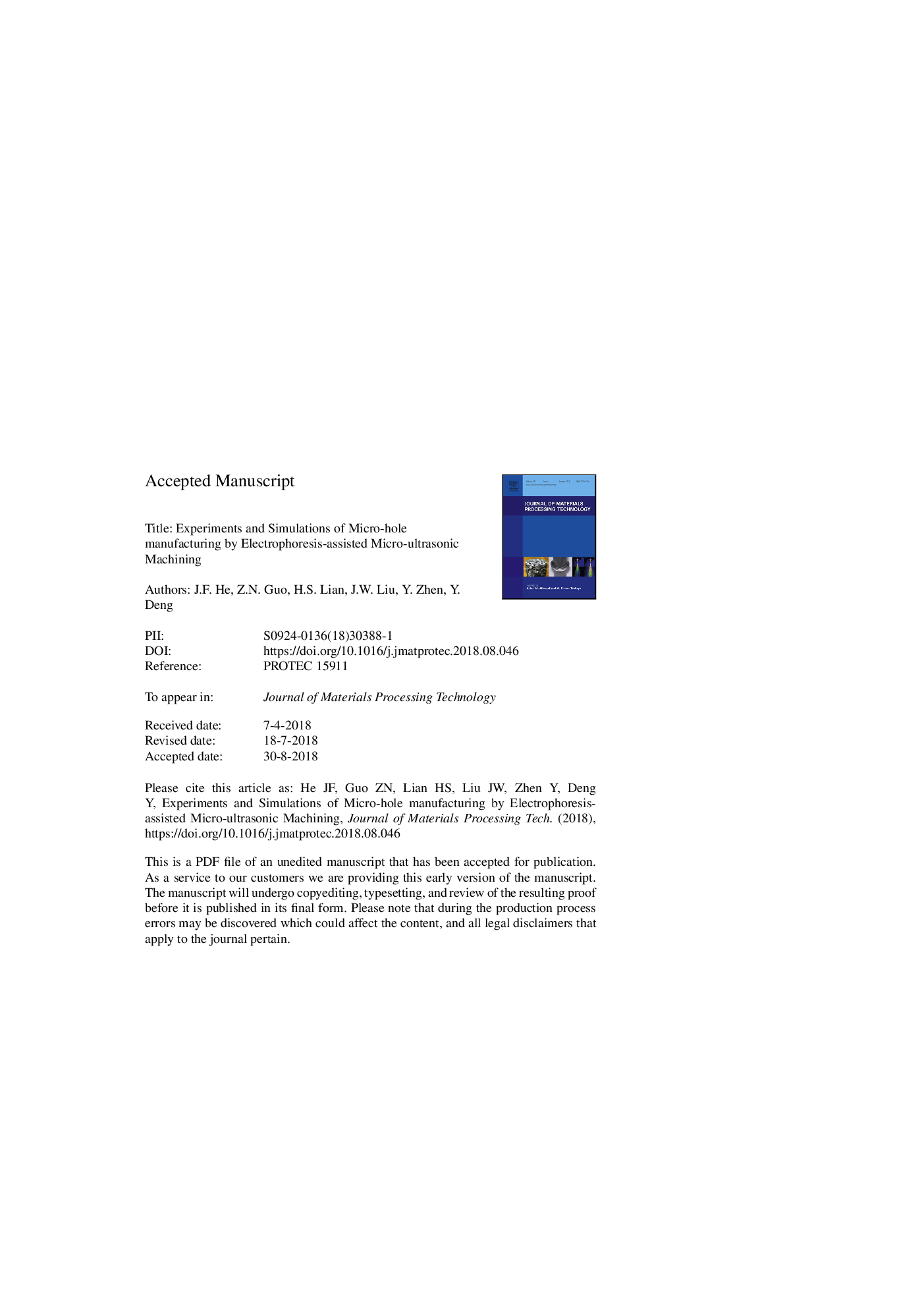| Article ID | Journal | Published Year | Pages | File Type |
|---|---|---|---|---|
| 8960561 | Journal of Materials Processing Technology | 2019 | 23 Pages |
Abstract
Electrophoresis-assisted micro-ultrasonic machining (EPAMUSM) is an effective method for solving the problem of using traditional micro-ultrasonic machining (MUSM) to fabricate micro-holes in materials that are hard and brittle, namely the low utilization ratio of abrasive particles. EPAMUSM uses an electric field to attract the abrasive particles to the processing area during processing, which is useful for improving both the utilization ratio of abrasive particles and the processing quality. Numerical simulations of the concentration distributions of abrasive particles in MUSM and EPAMUSM show that the abrasive concentration on the tool surface is much higher in EPAMUSM. The concentration increases rapidly from 1âmol/m3 to 4.68âmol/m3 after 10âs in EPAMUSM. Comparative experiments show that EPAMUSM has advantages over MUSM under the same processing conditions: the EPAMUSM edge chipping rate (0.03) is much less than the MUSM one (0.22) and the EPAMUSM material removal rate (1.916âÃâ10â4âmm3/min) is marginally better than the MUSM one (1.718âÃâ10â4âmm3/min). Single-factor experiments are used to study how varying certain parameters (namely DC voltage, ultrasonic power, and spindle speed) affects EPAMUSM manufacturing quality and efficiency. Finally, the processing parameters are optimized by means of response-surface experiments, and the optimum EPAMUSM processing parameters are determined (namely an applied voltage of 7.5âV, an ultrasonic power of 22.5âW, a spindle speed of 300ârpm, and a mass fraction of 10%).
Related Topics
Physical Sciences and Engineering
Engineering
Industrial and Manufacturing Engineering
Authors
J.F. He, Z.N. Guo, H.S. Lian, J.W. Liu, Z. Yao, Y. Deng,
